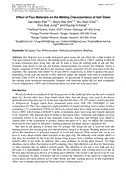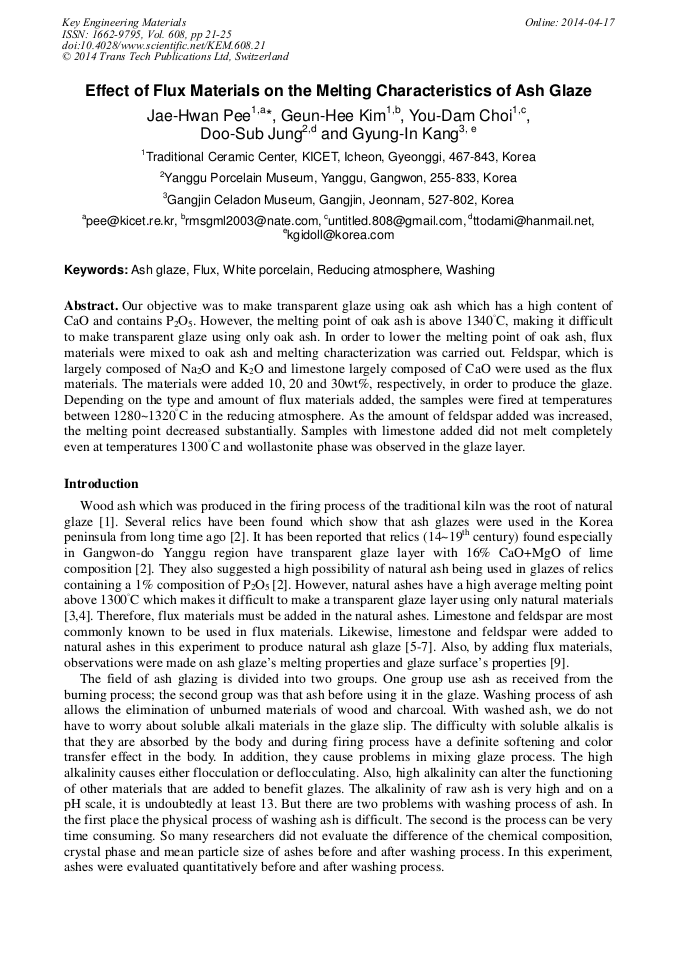p.3
p.8
p.14
p.21
p.26
p.31
p.37
p.41
Effect of Flux Materials on the Melting Characteristics of Ash Glaze
Abstract:
Our objective was to make transparent glaze using oak ash which has a high content of CaO and contains P2O5. However, the melting point of oak ash is above 1340°C, making it difficult to make transparent glaze using only oak ash. In order to lower the melting point of oak ash, flux materials were mixed to oak ash and melting characterization was carried out. Feldspar, which is largely composed of Na2O and K2O andlimestone largely composed of CaO were used as the flux materials. The materials were added 10, 20 and 30wt%, respectively, in order to produce the glaze. Depending on the type and amount of flux materials added, the samples were fired at temperatures between 1280~1320°C in the reducing atmosphere. As the amount of feldspar added was increased, the melting point decreased substantially. Samples with limestone added did not melt completely even at temperatures 1300°C and wollastonite phase was observed in the glaze layer.
Info:
Periodical:
Pages:
21-25
Citation:
Online since:
April 2014
Authors:
Keywords:
Price:
Permissions:
Сopyright:
© 2014 Trans Tech Publications Ltd. All Rights Reserved
Share:
Citation:

